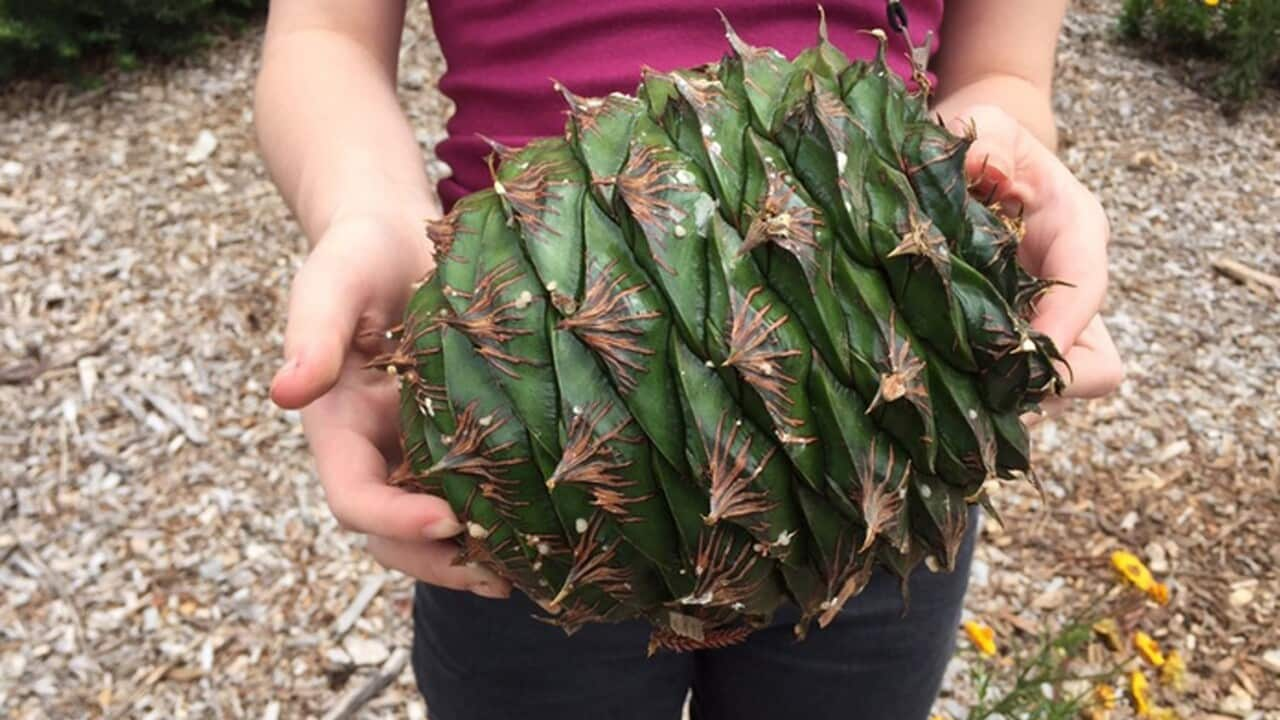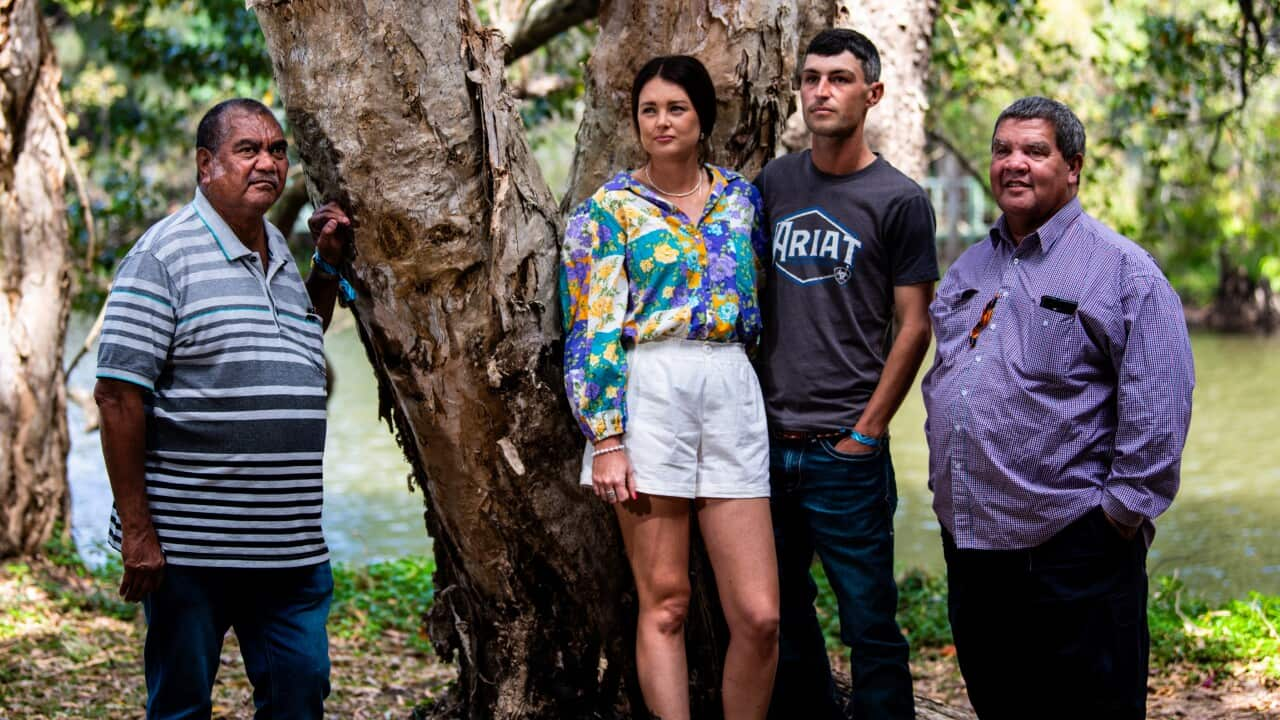Aboriginal peoples increased the spread of a tree species that held cultural and culinary significance as a response to colonisation, new research has found.
Bunya pines have been important to Aboriginal peoples for thousands of years, with a bumper season signalling important gatherings on the east coast.
The giant nuts come from the cone of the bunya pine (Araucaria bidwillii), which dates back to the age of dinosaurs.
Genomic tools are now helping to retrace past .

Charlene Williams taking visitors on an Aboriginal Heritage tour of the Royal Botanic Garden in Sydney. New research has found Aboriginal people continued the spread of bunya pines to preserve them after colonisation. Credit: BOTANIC GARDENS OF SYDNEY/PR IMAGE
Monica Fahey, a molecular ecologist at the Botanic Gardens and Macquarie University PhD student, said the research team combined Indigenous knowledge, historical literature and plant genetics.
"We gained insight into the dispersal of bunya pine by Indigenous peoples and found evidence that movement of bunya pine in some areas increased under settler-colonialism to maintain cultural connections," she said.
This information may inform future biocultural conservation strategies, as translocation - the movement of plant propagules from one place to another - is becoming an increasingly important conservation tool.
As part of an Australia Research Council Discovery grant team, Ms Fahey worked with Gungalida man and Macquarie University Masters student Patrick Cooke to investigate whether Indigenous peoples dispersed edible rainforest trees prior to European colonisation.
The research team used bunya leaf DNA samples to infer the historical movement of the trees across Queensland.
Historical literature and Indigenous knowledge about uses of and connections to bunya was used to interpret the genetic data.
They found genetic patterns that suggest pre-colonial movement of bunya pine in southeast Queensland was localised or of low intensity and that movement of the bunya pine intensified in the area following European colonisation.
"We concluded that pre-colonial movement was likely restricted by kinship-based custodial rights, and that when Indigenous peoples were displaced by European settlers, movement was intensified here to maintain cultural connectivity," Ms Fahey said.
"By comparison, only two small populations grow in northern Queensland, and we found that in this area, the species was not dispersed much before or after colonisation and had less cultural lore than those in southern Queensland."
Indigenous peoples of southeast Queensland and northern NSW maintained bunya pine groves through laws that inhibited damage and over-exploitation of the trees.
"There is increasing evidence that similar post-colonial long-distance dispersal of culturally significant plants was also practised by Indigenous groups in other parts of Australia, as well as New Zealand and North America, suggesting that increased dispersal was a widespread Indigenous response to colonisation," Ms Fahey said.
The nuts can be prepared in many different ways, both raw and cooked.
Bonye Biar (the Bunya Mountains) has been likened to a parliament house for Aboriginal people across southern Queensland and northern NSW.
Important gatherings occurred in line with the bumper bunya nut crop, around every three years, when lore was maintained including trade, marriages, and settling disputes.
Many different tribal groups, up to thousands of people, would travel great distances from as far as Charleville, Dubbo, Bundaberg and Grafton to the gatherings, staying for weeks.
The whole of the landscape is considered highly significant cultural heritage and is managed by the Bunya Peoples Aboriginal Corporation.
In the local Barrungam language, the mountains are known as Booburrgan Ngmmunge, meaning mother's breast or mother's milk.




